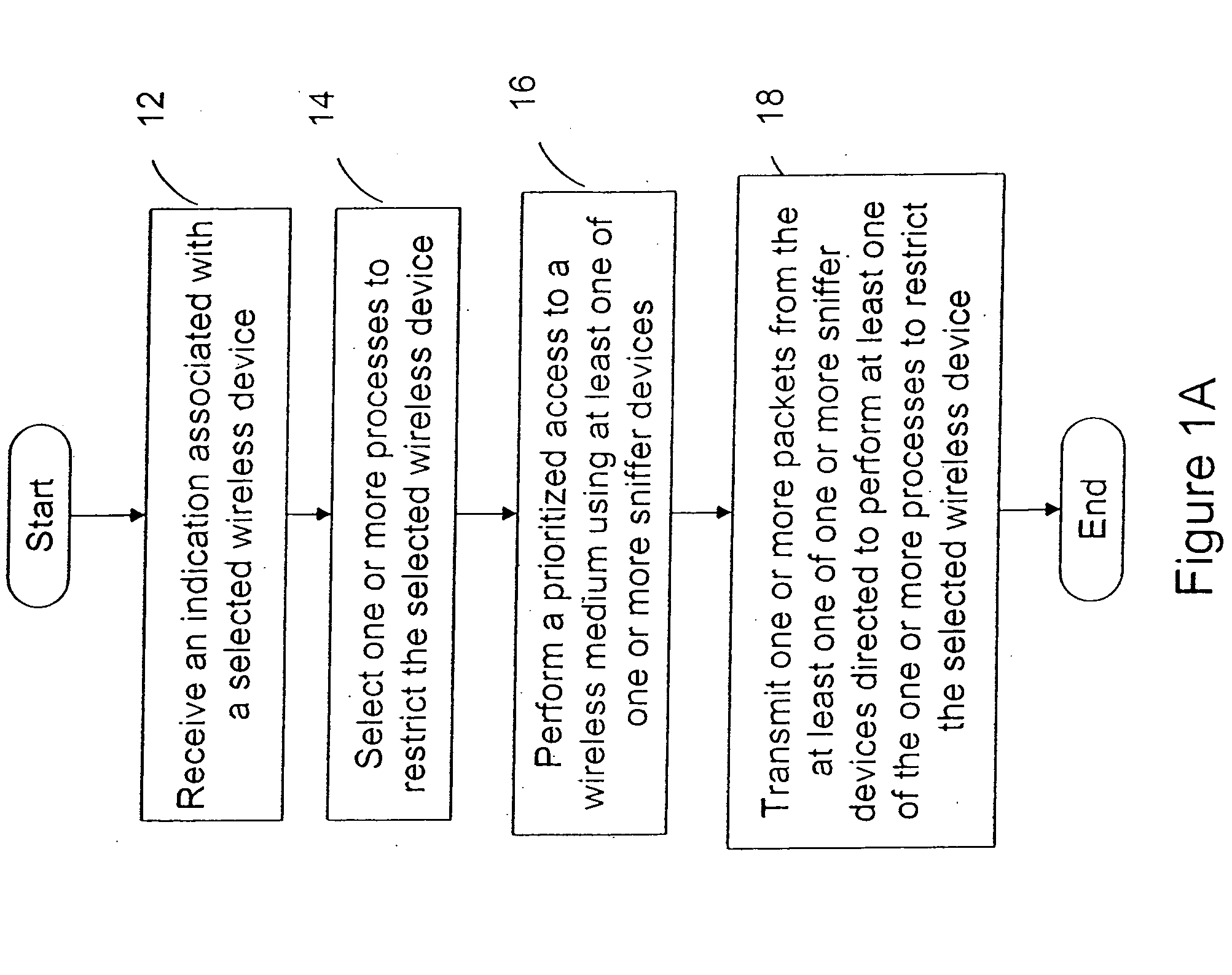Method and a system for regulating, disrupting and preventing access to the wireless medium
a wireless medium and access control technology, applied in the field of wireless computer networking techniques, can solve the problems of affecting and the limitations of the wifi network, so as to minimize the adverse impact of intrusion prevention on authorized devices, maximize the impact on unauthorized devices, and ensure the security of the network
- Summary
- Abstract
- Description
- Claims
- Application Information
AI Technical Summary
Benefits of technology
Problems solved by technology
Method used
Image
Examples
Embodiment Construction
[0033] According to the present invention, techniques for wireless computer networking are provided. More particularly, the invention provides a method and a system for providing intrusion prevention for local area wireless networks. Merely by way of example, the invention has been applied to a computer networking environment based upon the IEEE 802.11 family of standards, commonly called “WiFi.” But it would be recognized that the invention has a much broader range of applicability. For example, the invention can be applied to UWB, WiMAX (802.16), Bluetooth, and others.
[0034] Before a full discussion of the various embodiments of the present invention, we have summarized additional limitations of conventional techniques, which we may have discovered. Here, conventional attempts have been made to provide mechanisms to thwart communication attempts by the unauthorized devices, with varying degrees of performance and reliability. In one conventional solution, when an unauthorized AP ...
PUM
 Login to View More
Login to View More Abstract
Description
Claims
Application Information
 Login to View More
Login to View More - R&D
- Intellectual Property
- Life Sciences
- Materials
- Tech Scout
- Unparalleled Data Quality
- Higher Quality Content
- 60% Fewer Hallucinations
Browse by: Latest US Patents, China's latest patents, Technical Efficacy Thesaurus, Application Domain, Technology Topic, Popular Technical Reports.
© 2025 PatSnap. All rights reserved.Legal|Privacy policy|Modern Slavery Act Transparency Statement|Sitemap|About US| Contact US: help@patsnap.com



